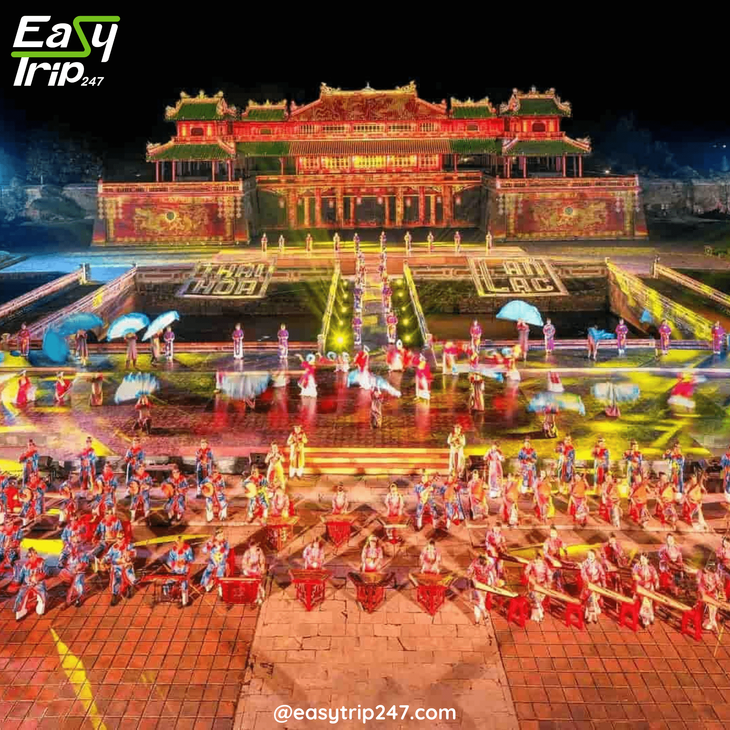
Vietnam is home to numerous national monuments that reflect its cultural heritage and historical significance, making it a treasure trove for travelers eager to delve into the nation’s past. From the ancient temples of My Son to the iconic Imperial City of Hue, each site offers a unique glimpse into Vietnam's storied history and vibrant culture. To ensure your Easy Trip is both enjoyable and educational, it’s essential to plan ahead, allowing you to maximize your experience while minimizing stress.
First and foremost, understanding the geography of Vietnam is crucial for planning your Easy Trip. The country stretches from the northern mountains of Sapa to the southern Mekong Delta, and each region boasts its own national monuments. Start by identifying which monuments you want to visit based on your interests and the time you have available. For instance, if you’re fascinated by ancient architecture, you might prioritize visiting the Temple of Literature in Hanoi, a tribute to Confucianism and Vietnam’s educational history, or the ancient ruins of My Son, which showcase the remnants of the Cham civilization. Conversely, if you’re drawn to colonial history, the War Remnants Museum in Ho Chi Minh City offers poignant insights into the Vietnam War and its impact on the nation. By selecting monuments that resonate with your interests, you can create a personalized itinerary for your Easy Trip.
Next, consider the best time to visit Vietnam for your Easy Trip. The country experiences diverse weather patterns, so timing your visit can significantly enhance your experience. Generally, the dry season from November to April is considered ideal for exploring national monuments, as the weather is cooler and less humid. However, if you plan to visit specific festivals or cultural events tied to these monuments, be sure to check the local calendar. For example, the Tet Festival, which usually falls in late January or early February, is a vibrant celebration that showcases traditional customs and can provide a unique backdrop to your monument visits. By aligning your travel dates with local events, you can enrich your Easy Trip with unforgettable experiences.
Transportation is another critical factor in planning your Easy Trip to national monuments. Vietnam offers various transportation options, including domestic flights, trains, buses, and taxis. For longer distances, such as traveling from Hanoi to Ho Chi Minh City, consider booking a domestic flight to save time. However, for shorter distances, trains and buses provide scenic views of the countryside and are often more economical. If you prefer flexibility, renting a motorbike or car can be a fantastic way to explore at your own pace, allowing you to stop at lesser-known sites along the way. Regardless of your choice, ensure you plan your transportation in advance to avoid any last-minute hassles during your Easy Trip.
Once you have your itinerary and transportation sorted, it’s time to think about accommodations. Vietnam offers a wide range of lodging options, from luxury hotels to budget hostels, ensuring there’s something for every traveler. For an Easy Trip, consider staying in centrally located accommodations near the national monuments you plan to visit. This not only saves you travel time but also allows you to immerse yourself in the local culture. For example, staying in the Old Quarter of Hanoi places you within walking distance of the Temple of Literature, Hoan Kiem Lake, and various museums. Alternatively, if you’re visiting Hue, consider a hotel along the Perfume River for picturesque views and easy access to the Imperial City. By choosing the right accommodations, you can enhance the comfort and convenience of your Easy Trip.
As you prepare for your Easy Trip, don’t forget to research the national monuments you’ll be visiting. Understanding the historical context and significance of each site will enrich your experience and help you appreciate the cultural heritage of Vietnam. Many monuments offer guided tours, which can provide valuable insights into their history and architecture. If you prefer exploring independently, consider downloading informative apps or audio guides that can enhance your visit. Additionally, reading up on local customs and etiquette is essential, especially when visiting religious sites. For instance, dressing modestly and showing respect during ceremonies can help you connect with the local culture and ensure a more meaningful experience during your Easy Trip.
Food is an integral part of any travel experience, and Vietnam’s culinary scene is as rich as its history. As you explore national monuments, take the opportunity to sample local delicacies. Each region has its specialties, from the famous pho and banh mi in Hanoi to the fresh seafood in Hoi An. Consider planning your meals around your visits to national monuments; for instance, enjoy a hearty breakfast in Ho Chi Minh City before visiting the War Remnants Museum, or savor a traditional lunch in Hue after exploring the Imperial City. By incorporating food experiences into your Easy Trip, you’ll not only satisfy your taste buds but also gain a deeper appreciation for Vietnam’s diverse culinary heritage.
To make your Easy Trip even more enjoyable, consider engaging with local communities during your visits to national monuments. Many sites offer cultural workshops, such as traditional cooking classes or handicraft sessions, where you can learn from skilled artisans. This hands-on experience not only enriches your understanding of Vietnamese culture but also supports local communities. For example, participating in a lantern-making workshop in Hoi An allows you to create a unique souvenir while engaging with local craftsmen. By immersing yourself in these cultural experiences, you can create lasting memories that go beyond the typical tourist experience during your Easy Trip.
As you navigate through Vietnam's national monuments, it’s essential to remain mindful of your environmental impact. Many of these sites are treasures of cultural heritage, and preserving them for future generations is vital. Practice responsible tourism by following guidelines, such as not littering, respecting local customs, and supporting local businesses. By being a conscious traveler, you contribute to the sustainability of these national monuments, ensuring that they can be enjoyed by future visitors. This commitment to responsible tourism aligns perfectly with the spirit of an Easy Trip, allowing you to enjoy your journey while making a positive impact.
Finally, don’t forget to capture the moments of your Easy Trip to Vietnam’s national monuments. Whether through photography, journaling, or blogging, documenting your experiences can help you reflect on your journey and share your adventures with others. Consider creating a travel scrapbook or an online blog where you can showcase the stunning architecture, beautiful landscapes, and vibrant culture you encountered. This not only serves as a personal keepsake but can also inspire others to embark on their own Easy Trip to explore Vietnam’s national monuments.
In conclusion, planning an Easy Trip to national monuments in Vietnam is an enriching experience that combines history, culture, and adventure. By carefully selecting your destinations, timing your visit, and considering transportation and accommodations, you can create a seamless travel experience. Engaging with local communities, sampling regional cuisine, and practicing responsible tourism will enhance your journey and create lasting memories. As you explore Vietnam's remarkable national monuments, you’ll find that each site tells a story, inviting you to connect with the past while enjoying the present. So pack your bags, embrace the spirit of adventure, and get ready for an Easy Trip that will leave you with a deeper appreciation for Vietnam’s rich heritage and vibrant culture!
Design Your Tour Today And Get A Quote. Contact Us Here: +84.975.504.825
Source: Easytrip247 Team compiled.
